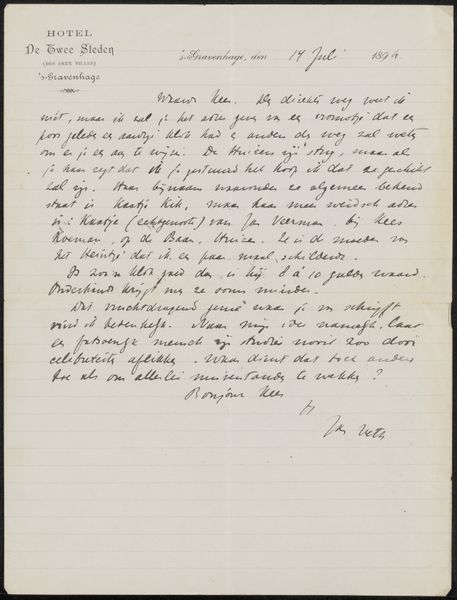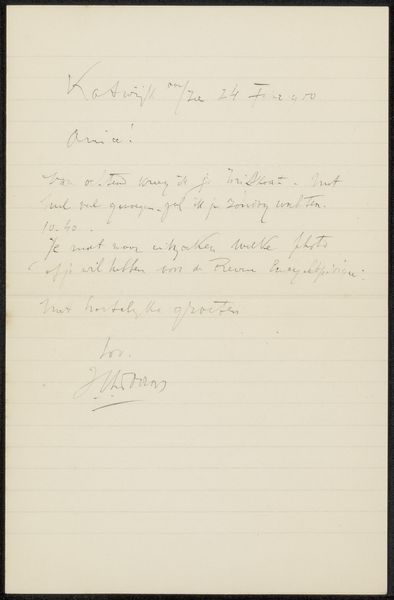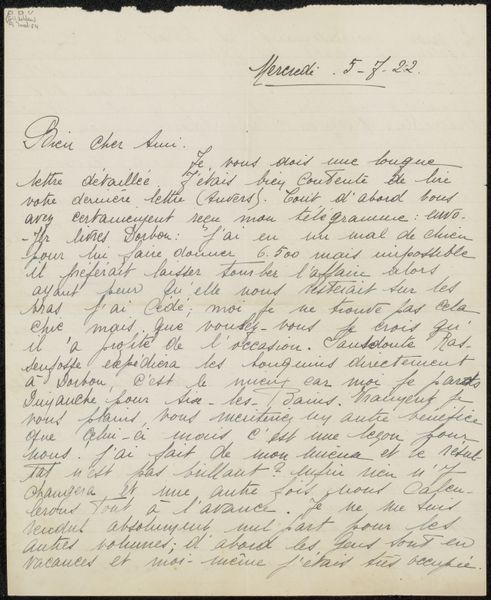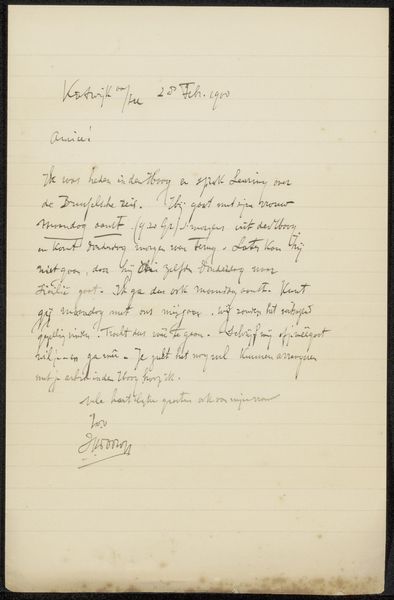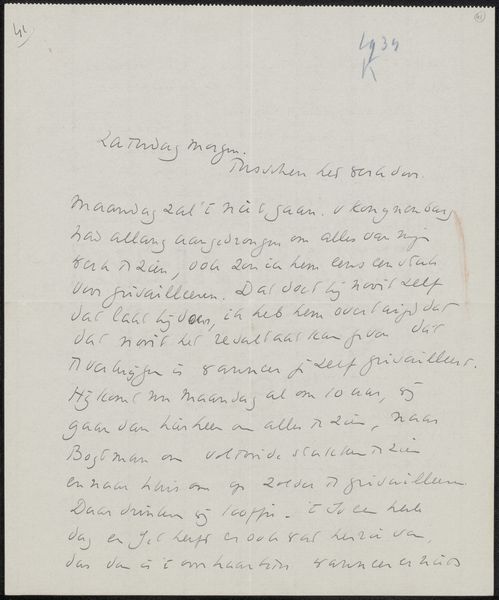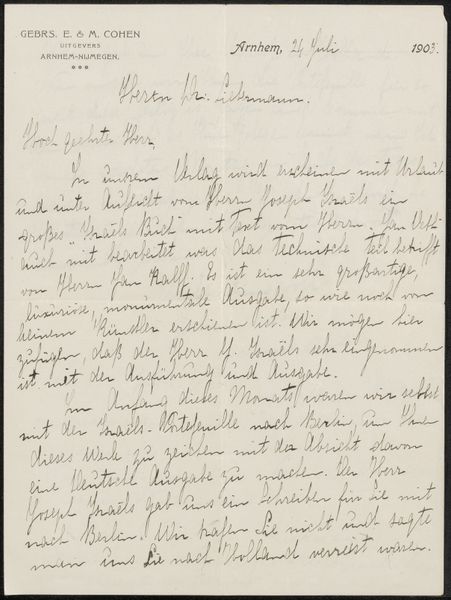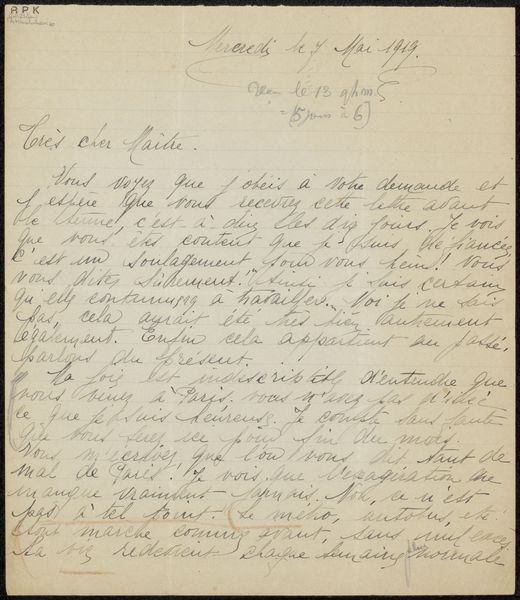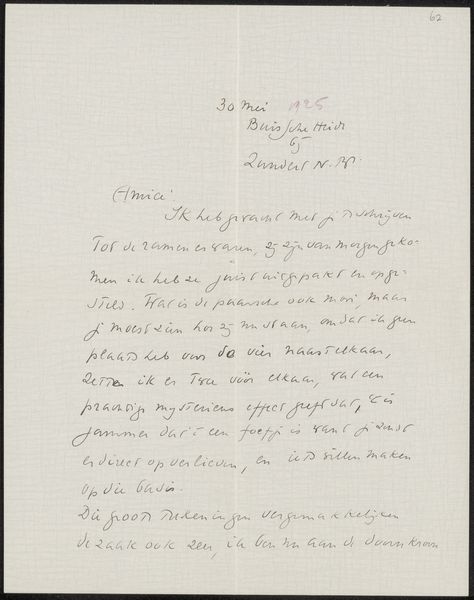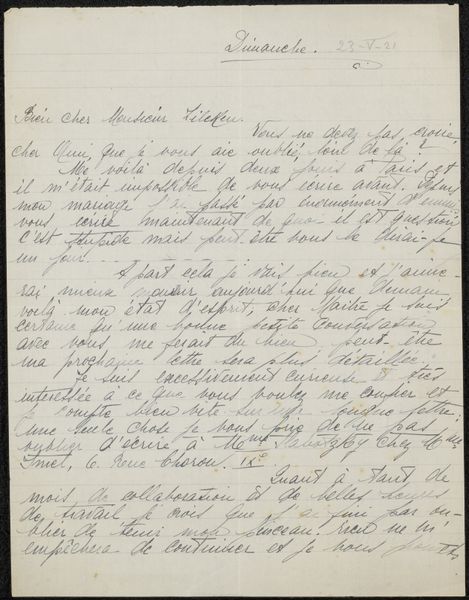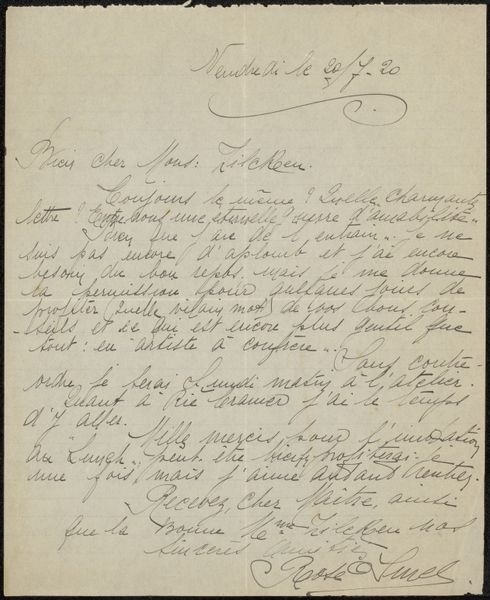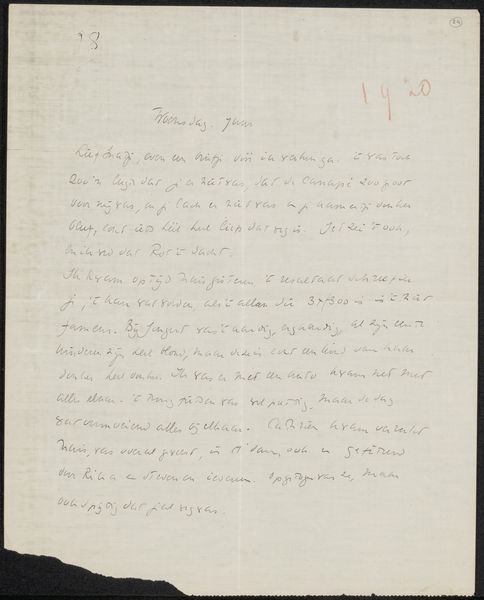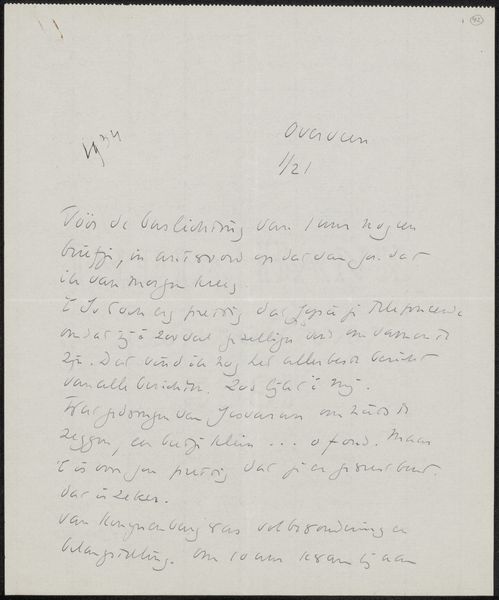
drawing, paper, ink, pen
#
drawing
#
hand-lettering
#
ink paper printed
#
hand drawn type
#
hand lettering
#
paper
#
personal sketchbook
#
ink
#
hand-drawn typeface
#
intimism
#
ink colored
#
thick font
#
sketchbook drawing
#
pen
#
sketchbook art
Copyright: Rijks Museum: Open Domain
Editor: Here we have Richard Nicolaüs Roland Holst’s "Brief aan Anna Dorothea Dirks," likely from 1893, rendered in ink on paper. What strikes me is how this personal letter becomes a kind of art object through the artist's hand lettering and the hotel stationery. How does the historical context affect how we interpret a piece like this? Curator: That’s a very astute observation. Considering the historical context, this isn't merely a personal letter, but a window into the artistic circles and social structures of the late 19th century. Holst, embedded within the cultural elite, utilizes this letterform not just for communication but as a display of intimacy and perhaps even status. Think about it, writing on hotel stationery suggests a certain level of affluence and social mobility. Editor: So, the choice of writing paper says something about who he is trying to present himself to be? Curator: Precisely! The very act of hand-lettering, in an age of increasing mechanization, underscores the value placed on craftsmanship and individual expression within the Arts and Crafts movement that was blooming at the time. It’s a deliberate rejection of mass-produced communication. This letter becomes a statement about artistic identity within a specific socio-economic context. What does this make you think about the “intimism” tag in the metadata? Editor: I see… The intimacy isn't just the personal message, but also in the deliberately hand-crafted form in defiance of the rise of printed communications. It becomes a symbol of personal connection in a rapidly changing world. Curator: Exactly. And consider the recipient, Anna Dorothea Dirks. What role might she have played in Holst’s life or artistic network? This simple letter opens up broader questions about artistic patronage, relationships, and the public role of what might seem like a private document. Editor: I had never considered a letter as being tied to the cultural politics of the era. Curator: Right. Analyzing seemingly minor ephemera like this sheds light on the intricate interplay between art, society, and personal expression, doesn't it?
Comments
No comments
Be the first to comment and join the conversation on the ultimate creative platform.
